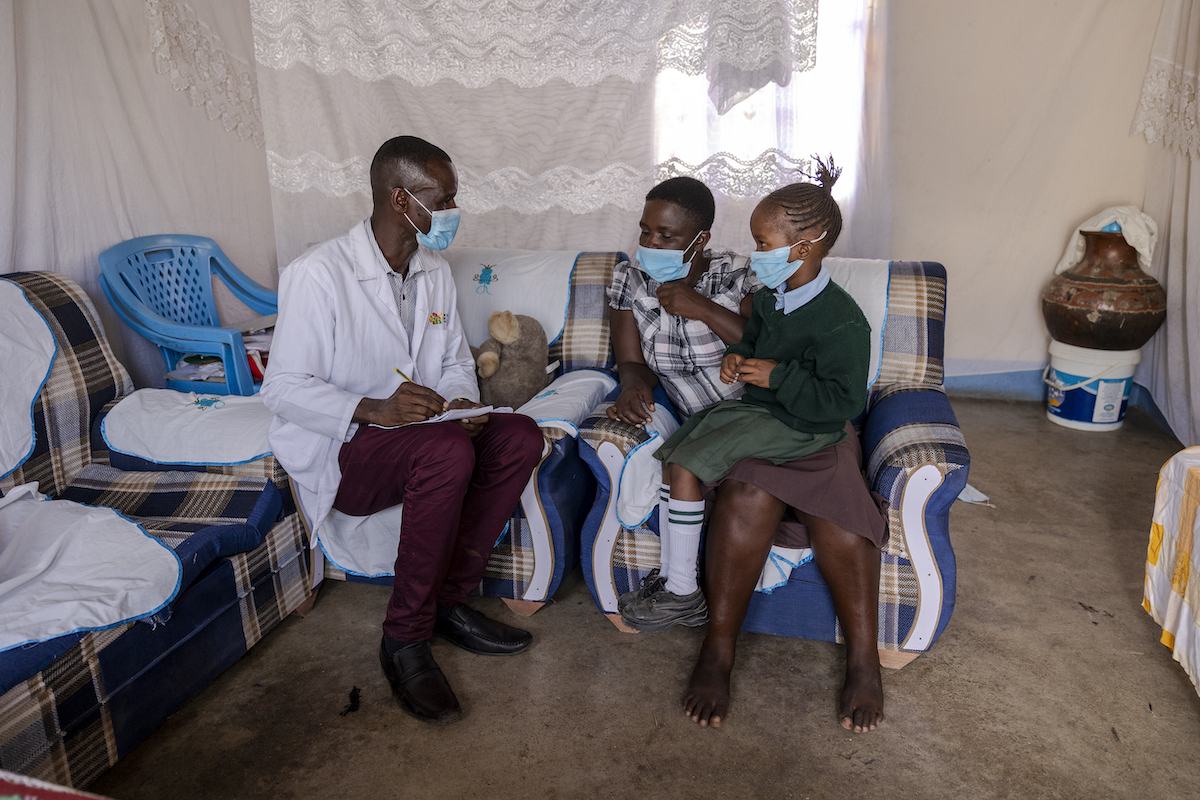Lomé, 24 August 2022 – The African Union and the World Health Organization (WHO) today called for immediate and comprehensive measures to end the significant toll of tuberculosis among children in Africa. The appeal was made jointly with the Elizabeth Glaser Pediatric AIDS Foundation (EGPAF) and the Stop TB Partnership on the side-lines of the Seventy-second session of the WHO Regional Committee for Africa in Lomé, Togo.
The African region is home to 17 of the 30 countries with the highest tuberculosis burden globally and accounts for around 322 000 children and young adolescents (aged 0—15 years) or a third of tuberculosis cases among those under 15 years of age worldwide. Of particular concern is that two-thirds of children in the region are unreported or undiagnosed for the disease, leading to an increased risk of rapid disease progression and mortality, especially in younger children. Among children under five just around a third (32%) are diagnosed – the smallest proportion globally.
The low detection of tuberculosis arises from challenges in specimen collection as well as bacteriological confirmation of the disease among children who can display non-specific clinical symptoms that overlap those of other common childhood diseases. Additionally, children and young adolescents usually access primary health care or child health services in facilities where the capacity to diagnose for tuberculosis is often limited
Worsening the impact of tuberculosis is malnutrition. Globally, 19% of all tuberculosis cases are associated with malnutrition.
“Childhood tuberculosis doubled with malnutrition poses major health challenges in the African Union Member States,” said H.E Minata Samate Cessouma, Commissioner for Health, Humanitarian Affairs and Social Development, African Union Commission. “Undernourished children with tuberculosis are susceptible to developing extensive and severe complications. There is an urgent need for innovative interventions to integrate tuberculosis diagnosis in nutrition programmes to identify the disease in children quickly.”
“The epidemic of tuberculosis among children in Africa has been occurring in the shadows and has until now been largely ignored. We hope this call will galvanize action and ensure no child in Africa is lost to a disease which in many parts of the world is now history,” said Dr Matshidiso Moeti, WHO Regional Director for Africa. “Strong political leadership, accountability, financial support and global solidarity are critically needed to increase access to effective diagnostics, medications, vaccines and other tools for tuberculosis control.”
At the side-event, towards political leadership to end childhood tuberculosis by 2030, the African Union, WHO, EGPAF and Stop TB Partnership also called for swift measures to accelerate recovery from the impact of COVID-19 and urged countries to facilitate the scale-up of child-friendly tuberculosis diagnosis, treatment and care.
“One child dies of tuberculosis somewhere in the world every two minutes even though tuberculosis is curable and preventable. Children with tuberculosis are almost never spreading the disease and are always infected by an adult, so their suffering is a metric of our failures to diagnose and treat tuberculosis in children,” said Dr Lucica Ditiu, Executive Director of Stop TB Partnership. “We call on all our partners to be committed, united and learn from our achievements and mistakes to ensure that an airborne disease hundreds of years old like TB is not a threat for the generations to come,”
Under the WHO End TB Strategy, countries should aim to reduce TB cases by 80% and cut deaths by 90% by 2030 compared with 2015. The strategy also sets key milestones that countries should cross by 2020 and 2025 if they are to end the disease.
The 2020 milestone sought a 35% reduction in tuberculosis deaths and 20% decline in cases. Only six countries with high tuberculosis burden met the 2020 case reduction milestone and just six achieved the target to reduce deaths by 35%.
“Ensuring we meaningfully invest in the tools and technologies needed to respond to the tuberculosis pandemic, guarantees that the global health community can save the lives of thousands of people living with or at risk for tuberculosis infection. However, should we fail to prioritize children and adolescents in these efforts, we will ultimately fail at achieving our goal of realizing a future free from tuberculosis,” said Chip Lyons, President and Chief Executive Officer of EGPAF.
The partners called on African countries to prioritize funding for tuberculosis prevention and control and allocate sufficient financial, technical and human resources to accelerate progress towards ending the disease in children and adolescents. Currently, investment and funding for tuberculosis control in Africa remains low, jeopardizing the efforts to meet the global target of ending the disease by 2030. The African region requires at least US$ 1.3 billion for tuberculosis prevention and treatment every year, yet countries contribute 22% of the needed budget while external funding accounts for 34%. The rest of the budget remains unfunded.


